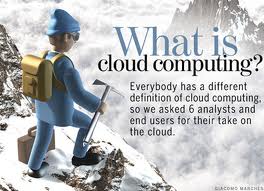Definition:
Cloud computing is a phrase used to describe a variety of computing concepts that involve a large number of computers connected through a real-time communication network such as the Internet. In science, cloud computing is a synonym for distributed computing over a network, and means the ability to run a program or application on many connected computers at the same time.
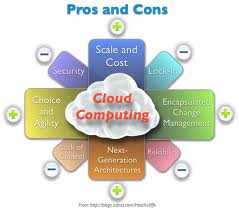
The phrase also more commonly refers to network-based services, which appear to be provided by real server hardware, and are in fact served up by virtual hardware, simulated by software running on one or more real machines. Such virtual servers do not physically exist and can therefore be moved around and scaled up or down on the fly without affecting the end user, somewhat like a cloud.
Advantages:
Cloud computing relies on sharing of resources to achieve coherence and economies of scale, similar to a utility (like the electricity grid) over a network. At the foundation of cloud computing is the broader concept of converged infrastructure and shared services.
The cloud also focuses on maximizing the effectiveness of the shared resources. Cloud resources are usually not only shared by multiple users but are also dynamically reallocated per demand.
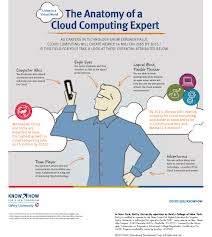
This can work for allocating resources to users. For example, a cloud computer facility that serves European users during European business hours with a specific application (e.g., email) may reallocate the same resources to serve North American users during North America’s business hours with a different application (e.g., a web server). This approach should maximize the use of computing powers thus reducing environmental damage as well since less power, air conditioning, rackspace, etc. is required for a variety of functions.
The term “moving to cloud” also refers to an organization moving away from a traditional CAPEX model (buy the dedicated hardware and depreciate it over a period of time) to the OPEX model (use a shared cloud infrastructure and pay as one uses it).
Proponents claim that cloud computing allows companies to avoid upfront infrastructure costs, and focus on projects that differentiate their businesses instead of infrastructure.Proponents also claim that cloud computing allows enterprises to get their applications up and running faster, with improved manageability and less maintenance, and enables IT to more rapidly adjust resources to meet fluctuating and unpredictable business demand.
Hosted services:
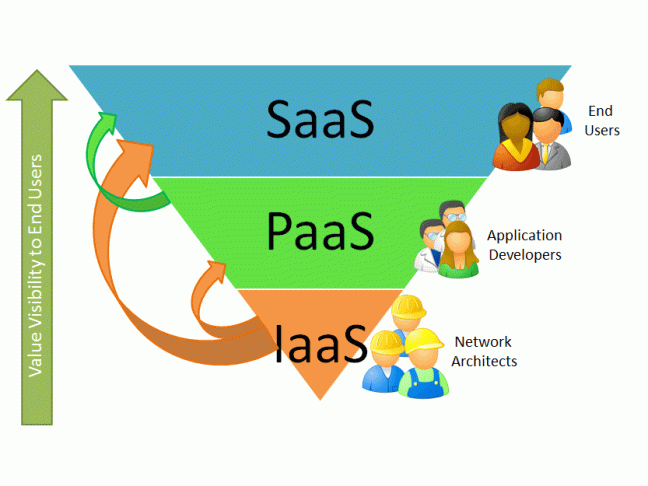
The term “cloud computing” is mostly used to sell hosted services in the sense of application service provisioning that run client server software at a remote location. Such services are given popular acronyms like ‘SaaS’ (software as a service), ‘PaaS’ (platform as a service), ‘IaaS’ (infrastructure as a service), ‘HaaS’ (hardware as a service) and finally ‘EaaS’ (everything as a service). End users access cloud-based applications through a web browser, thin client or mobile app while the business software and user’s data are stored on servers at a remote location. Examples include Amazon web services and Google App engine which allocate space for a user to deploy and manage software “in the cloud”.
Growth and popularity:

The development of the Internet from being document centric via semantic data towards more and more services was described as “Dynamic Web”. This contribution focused in particular in the need for better meta-data able to describe not only implementation details but also conceptual details of model-based applications.

The present availability of high-capacity networks, low-cost computers and storage devices as well as the widespread adoption of hardware virtualization, service-oriented architecture, autonomic, and utility computing have led to a growth in cloud computing.
Characteristics:
Cloud computing exhibits the following key characteristics:
- Agility: improves with users’ ability to re-provision technological infrastructure resources.
- Application programming interface (API) accessibility to software that enables machines to interact with cloud software in the same way that a traditional user interface (e.g., a computer desktop) facilitates interaction between humans and computers. Cloud computing systems typically use Representational State Transfer (REST)-based APIs.
- Cost: cloud providers claim that computing costs reduce. A public-cloud delivery model converts capital expenditure to operational expenditure.This purportedly lowers barriers to entry, as infrastructure is typically provided by a third-party and does not need to be purchased for one-time or infrequent intensive computing tasks. Pricing on a utility computing basis is fine-grained, with usage-based options and fewer IT skills are required for implementation (in-house). The e-FISCAL project’s state-of-the-art repository contains several articles looking into cost aspects in more detail, most of them concluding that costs savings depend on the type of activities supported and the type of infrastructure available in-house.
- Device and location independence enable users to access systems using a web browser regardless of their location or what device they use (e.g., PC, mobile phone). As infrastructure is off-site (typically provided by a third-party) and accessed via the Internet, users can connect from anywhere.
- Virtualization technology allows sharing of servers and storage devices and increased utilization. Applications can be easily migrated from one physical server to another.
- Multitenancy enables sharing of resources and costs across a large pool of users thus allowing for:Reliability improves with the use of multiple redundant sites, which makes well-designed cloud computing suitable for business continuity and disaster recovery.
Scalability and elasticity via dynamic (“on-demand”) provisioning of resources on a fine-grained, self-service basis near real-time(Note, the VM startup time varies by VM type, location, os and cloud providers), without users having to engineer for peak loads. 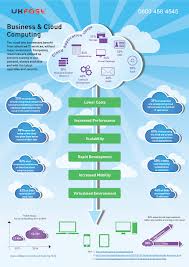 centralization of infrastructure in locations with lower costs (such as real estate, electricity, etc.)
centralization of infrastructure in locations with lower costs (such as real estate, electricity, etc.)-
- peak-load capacity increases (users need not engineer for highest possible load-levels)
- utilisation and efficiency improvements for systems that are often only 10–20% utilised.
Security:
As cloud computing is achieving increased popularity, concerns are being voiced about the security issues introduced through adoption of this new model. The effectiveness and efficiency of traditional protection mechanisms are being reconsidered as the characteristics of this innovative deployment model can differ widely from those of traditional architectures. An alternative perspective on the topic of cloud security is that this is but another, although quite broad, case of “applied security” and that similar security principles that apply in shared multi-user mainframe security models apply with cloud security.
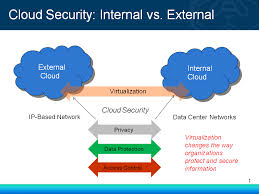
The relative security of cloud computing services is a contentious issue that may be delaying its adoption.Physical control of the Private Cloud equipment is more secure than having the equipment off site and under someone else’s control. Physical control and the ability to visually inspect data links and access ports is required in order to ensure data links are not compromised. Issues barring the adoption of cloud computing are due in large part to the private and public sectors’ unease surrounding the external management of security-based services.


